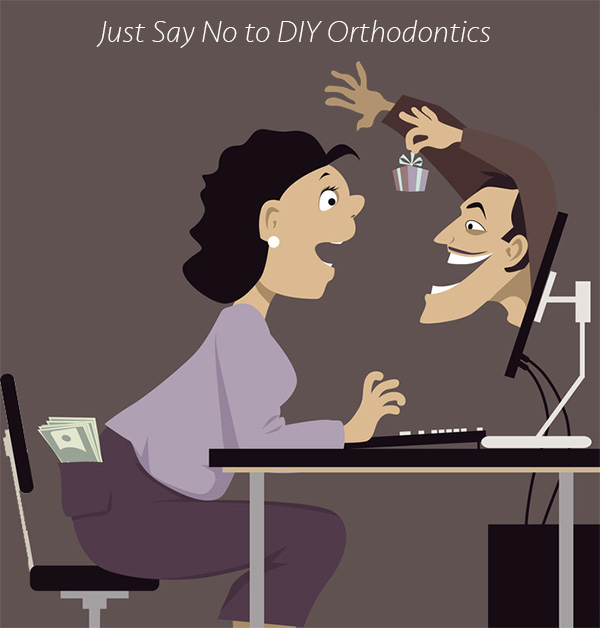Just Say No to DIY Orthodontics
It seems like today, you can find just about anything by going to our trusty friend, Google. And with the popularity of YouTube, there’s a how to video for practically everything. But one recent trend has Alpharetta orthodontist Dr. Nima Hajibaik worried.
“YouTube is a wonderful resource for a lot of things,” says Dr. Nima, a braces expert. “But learning how to straighten your teeth on your own isn’t one of them.”
That’s right – videos are popping up from users saying they perfected their smiles without the assistance of a certified orthodontist. These users are claiming they’ve used a set of simple rubber bands to either close gaps or straighten their smiles. They make it seem easy and straight-forward, but Dr. Nima cautions that it isn’t.
“There are numerous things wrong with this idea,” says Dr. Nima. “First, these rubber bands might not stay in place. We’re already hearing stories in the orthodontic world of them shifting and working their way up under the gums, causing serious damage. But more than that, you may have other underlying issues you don’t know about that won’t be helped by simply closing in a gap.”
A certified orthodontist has the skill and training needed to understand any issues you may be facing. And that means addressing any underlying issues, such as gum disease or bone loss, that might impact your overall result. Through a physical exam, as well as photos, X-rays and impressions, orthodontists have a complete picture of your mouth and oral health. This then helps the orthodontist make a diagnosis and craft the ideal treatment plan.
But a YouTube user doesn’t know what issues might be facing you. And neither does an online company, such as this one. And if you close a gap in the front of your mouth, what happens to the rest of your teeth? It would make sense that if you shift some teeth forward to close a gap, then you’d create a new gap somewhere else in the mouth.
“It’s issues like these that have me concerned,” says Dr. Nima. “Orthodontics is about much more than a beautiful smile. It’s about creating a healthy and functional one, as well. Simply shifting a few teeth might create additional problems with your bite, which can lead to issues with eating and even speaking.”
If your teeth don’t fit together properly, it can create abnormal wear on them. And that can lead to broken, chipped and cracked teeth. People may think they are saving big dollars by attempting to avoid the cost associated with braces, but they don’t realize they might be creating a bigger dentist bill for themselves in the future.
Do it yourselfers are also turning to tooth straightening kits to save money. There are currently two companies that prescribe aligners, similar in look to the ones used during Invisalign treatment. Patients simply need to take an impression themselves and send those in along with a photo, and a series of aligners will be prescribed remotely and mailed to their home.
Again, Dr. Nima cautions against this, for many of the same reasons. Impressions alone can’t be enough to determine a patient’s orthodontic issues – a physical examination, as well as X-rays and a series of photos are used to reach a diagnosis. X-rays are needed to be sure the bone supporting the teeth can respond to treatment, and regular check-ups with an orthodontist during treatment are needed to ensure the teeth are responding properly to treatment.
At the end of the day, if you want the best results, the only option should be a visit with a certified orthodontist. He or she will have the training and expertise to offer an accurate diagnosis and craft a custom treatment plan that will address the specific needs presented in the best way possible. A good rule of thumb is, if it sounds too good to be true, it probably is.



